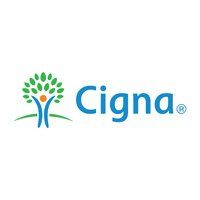When the Days Get Shorter: Understanding and Managing Seasonal Affective Disorder

By late afternoon, the sun’s already clocking out. The warmth of summer feels like a distant memory, and suddenly that cozy blanket you loved last year feels more like a lifeline. You might notice it starts gradually — sleeping a little later, skipping plans you’d normally enjoy, craving carbs like they’re going out of style. Before you know it, the “winter blues” start to feel heavier than usual.
If that sounds familiar, you’re not alone, and it might be more than just a case of the winter doldrums. For many people, these symptoms are part of Seasonal Affective Disorder (SAD), a form of depression that tends to appear when daylight hours shrink. While it often shows up in fall and winter, its impact can stretch well beyond the cold months.
At the North Carolina Institute of Advanced NeuroHealth, we see firsthand how seasonal changes can affect mental health — and how transformative the right care can be. Let’s take a closer look at what SAD is, why it happens, and what you can do to reclaim your light — even when the days grow dark.
The Science Behind the Seasonal Shift
Think of your brain as a finely tuned instrument that thrives on rhythm. Things like sleep, sunlight, and structure help to keep it in harmony. When daylight fades, your body’s internal clock (the circadian rhythm) can lose its beat. This change affects two important brain chemicals: melatonin, which helps you sleep, and serotonin, which boosts mood. Too much melatonin and too little serotonin can leave you feeling sluggish, unmotivated, and down.
For many people, SAD creeps in quietly. You might brush it off as “just tired,” or assume everyone feels this way in winter. But the truth is, Seasonal Affective Disorder is a real medical condition, and it deserves real treatment.
A Familiar Story: When Winter Starts to Feel Heavy
Take Sarah, for example, a working mom of two who always looked forward to the holidays. But last year, things changed. As soon as November hit, she started feeling cons,
The Science Behind the Seasonal Shift
Think of your brain as a finely tuned instrument that thrives on rhythm. Things like sleep, sunlight, and structure keep it in harmony. When daylight fades, your body’s internal clock (the circadian rhythm) can lose its beat. This change affects two important brain chemicals: melatonin, which helps you sleep, and serotonin, which boosts mood. Too much melatonin and too little serotonin can leave you feeling sluggish, unmotivated, and down.
For many people, SAD creeps in quietly. You might brush it off as “just tired,” or assume everyone feels this way in winter. But the truth is, Seasonal Affective Disorder is a real medical condition — and it deserves real treatment.
A Familiar Story: When Winter Starts to Feel Heavy
Take Sarah, for example, a working mom of two who always looked forward to the holidays. But last year, things changed. As soon as November hit, she started feeling constantly drained. The smallest tasks, like making dinner or helping with homework, felt impossible. She kept blaming the weather but deep down knew it was something more.
By January, her motivation had completely faded. She’d stopped exercising, lost interest in things she used to enjoy, and struggled to get out of bed. That’s when she reached out for help.
After her evaluation, Sarah learned she was dealing with Seasonal Affective Disorder. With help from her care team, she followed a treatment plan that combined TMS therapy and medication management. Over time, her energy returned, and she started to feel like herself again.
Her story isn’t rare. And that’s the point...SAD is treatable! You don’t have to push through the symptoms and wait for spring to arrive.
Small Shifts Can Have A Big Impact
While professional care is the cornerstone of recovery, small daily habits can also make a big difference. Try incorporating light, movement, and structure into your day. Here are some tips from our expert team:
Chase the daylight. Open curtains as soon as you wake up, bundle up for a short walk during lunch, or sit near a sunny window. Exposure to natural light helps regulate your circadian rhythm.
Stay connected. Isolation can make symptoms worse, so schedule coffee with a friend, attend a support group, or call family regularly.
Move your body. Exercise releases endorphins — nature’s antidepressant — and even gentle activity like stretching or yoga can help.
Watch your habits. It’s easy to turn to comfort foods or extra caffeine for energy, but balanced nutrition and hydration support a more stable mood.
Get curious about your sleep. Set consistent bedtimes and wake times. Quality rest is essential to emotional stability, especially when daylight hours are limited.
The key is consistency — even the smallest routines can bring your mind back to balance.
When Lifestyle Shifts Aren’t Enough
Sometimes, lifestyle changes only take you so far. For people with moderate to severe symptoms, targeted treatments can help restore brain function and mood regulation. At the North Carolina Institute of Advanced NeuroHealth, our team specializes in evidence-based therapies that go beyond traditional medication alone.
Medication Management:
For many individuals, antidepressant medications are an important part of treatment. Our clinicians work closely with each patient to tailor prescriptions to their unique symptoms, monitor progress, and make adjustments as needed. It’s not one-size-fits-all — we focus on balance and precision.
Spravato® (Esketamine Nasal Spray):
Spravato is a breakthrough treatment for depression, particularly for those who haven’t found relief with standard medications. Administered under medical supervision, Spravato works on glutamate pathways in the brain to create rapid antidepressant effects — often within hours or days, rather than weeks. For patients experiencing the heaviness of SAD, it can provide a meaningful boost in energy and mood.
TMS (Transcranial Magnetic Stimulation) Therapy:
TMS is a non-invasive therapy that uses gentle magnetic pulses to stimulate areas of the brain responsible for mood regulation. Unlike medications, it doesn’t circulate through your body — making it an excellent option for people who experience side effects or limited results from antidepressants. Over time, TMS helps “retrain” brain pathways, improving mood and resilience.
Each of these treatments offers unique benefits, and our clinicians often combine them within a comprehensive care plan tailored to your needs.
Don’t Dismiss the “Winter Blues”
It’s tempting to brush off symptoms by saying, “I’ll feel better when the weather changes.” But waiting it out can prolong suffering. Seasonal Affective Disorder isn’t just about being tired of winter — it’s about how the brain responds to light and rhythm. Ignoring it can allow symptoms to deepen, making recovery harder when spring finally arrives.
If you notice that every winter feels heavier, your motivation fades, or you struggle to find joy in things you usually love, it might be time to reach out. Depression — seasonal or otherwise — deserves care, compassion, and attention.
Reclaiming Your Light
You deserve to feel energized, focused, and hopeful — not just when the sun shines, but all year long. With the right treatment and support, recovery is not only possible; it’s expected.
At the North Carolina Institute of Advanced NeuroHealth, we believe healing begins with understanding. Our compassionate team is here to guide you through every step of the process, from your first consultation to finding the treatment plan that fits your life best.
This season, you can create brighter days with the right support.
Reach out today to learn how personalized depression care, including medication management, Spravato therapy, and TMS therapy, can help you rediscover your energy, restore your balance, and reconnect with the world around you.
Your light is still there, sometimes it just needs a little help finding its way back.
Watch Dr. Saranga Recommend Tips for Beating Seasonal Affective Disorder





















